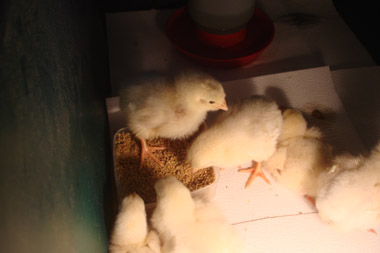Archive for March, 2018
Resurrection
Well—hello, folks.
If anyone is still out there, I’m back.
And, if you are still out there I applaud your perseverance for sticking around through this very long hiatus.
I have started and stopped, rewritten and reworked several versions of this post to explain the absence, but I decided to just cut to the chase—as it were.
There’s only one word for the absence.
FUNK.
That’s it.
Honestly.
I was in a big ole fat funk and feeling like I had to write blog posts multiple times a week was just adding to the stress of an already heavy life load—so I stopped—cold turkey.
It was almost 15-months ago I decided to take a break. I thought it would only last a few weeks and then I’d be right back at it. But, that wasn’t the case. A few weeks turned into several weeks, which turned into a whole lot more weeks, and a lot more weeks turned into months, until next thing I knew almost a whole year had gone by.
But, in retrospect, the break gave me the time I needed to rethink life and my place in it. I came to a lot of conclusions, made a lot of decisions, changed directions and have implemented some new personal practices as I move forward. That all sounds so ominous I know, but it has all been good, really.
The one thing I did realize is that I really missed writing about my suburban homestead, my time living on a larger farm, raising animals, gardening for food and pleasure, and generally sharing it all with you.
I’m not quite sure what form this new blogging will take, but one thing I do know for sure is that it won’t be crazy making. The pressure to create the perfect post with the perfect photos was just so overwhelming. There may be fewer posts, farther apart, with fewer pictures, because all of that takes time and is a lot of work. This blog isn’t a business for me. It’s a creative outlet; one that I enjoyed very much and one that “I” let get out of hand, so I’m reining it in.
Now that DD is off on her own I also don’t have as many animals as I once did. In fact, I only have 6 layers, so many posts drawing on my 40+ years of experience raising livestock, farming, 4-H, and suburban homesteading, rather than “real time” activities, because while I may not be doing certain things at this moment, I have done them many times in the past.
After a year away from almost everything, my suburban homestead is a wreck, seriously. After months of not working in it, coupled with massive wind storms and wildfires last fall, there is much to be done, which I will begin to do right after it stops raining.
I am looking forward to jumping back in and sharing bits and pieces of my suburban homestead with you, sans the daily posts and beautiful “real time” photosJ
So—sit tight. I already have a few posts in the works.
If you have stuck around, thank you, I mean that sincerely. And if you want, drop a comment to let me know you’re there.
That’s it, folks. You’ll be hearing from me soon.



Recent comments
Aenean nonummy hendrerit mauris. Phasellus porta.